NCERT Solutions for Class 9 English Beehive Chapter 8 – Kathmandu
NCERT Solutions for Class 9 English Chapter 8 – Kathmandu are essential for understanding travel writing and cultural contrast in the CBSE curriculum. These well-structured answers help students interpret the narrator’s journey, sensory experiences, and spiritual atmosphere of Kathmandu. Designed as per the latest syllabus, these solutions develop observational and descriptive skills. Ideal for revision and practice, they enhance literary appreciation and travel narrative understanding, making them a valuable study tool for Class 9 English exams.
NCERT Solutions For Class 9 English (Beehive) – Kathmandu – Exercise Images
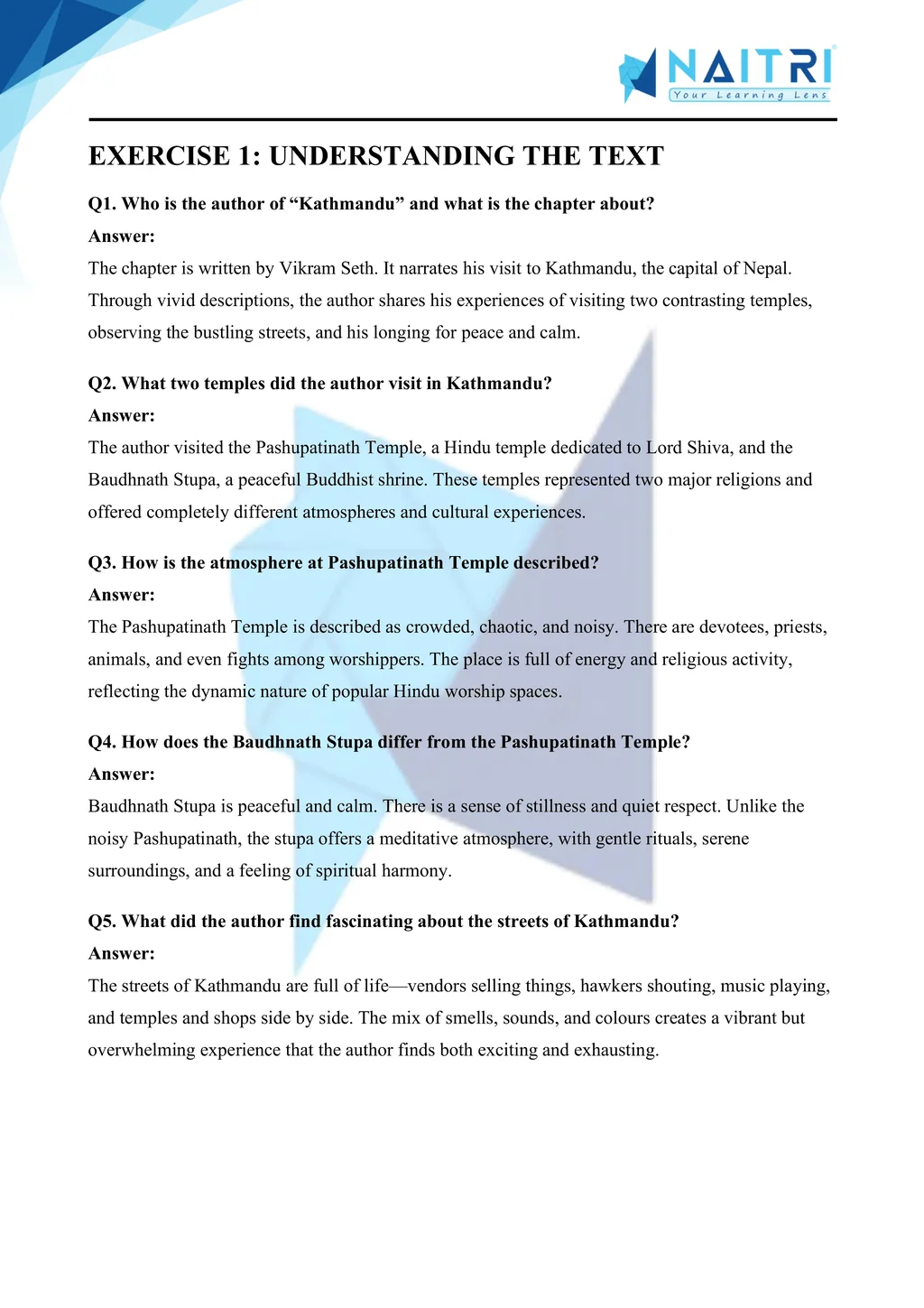
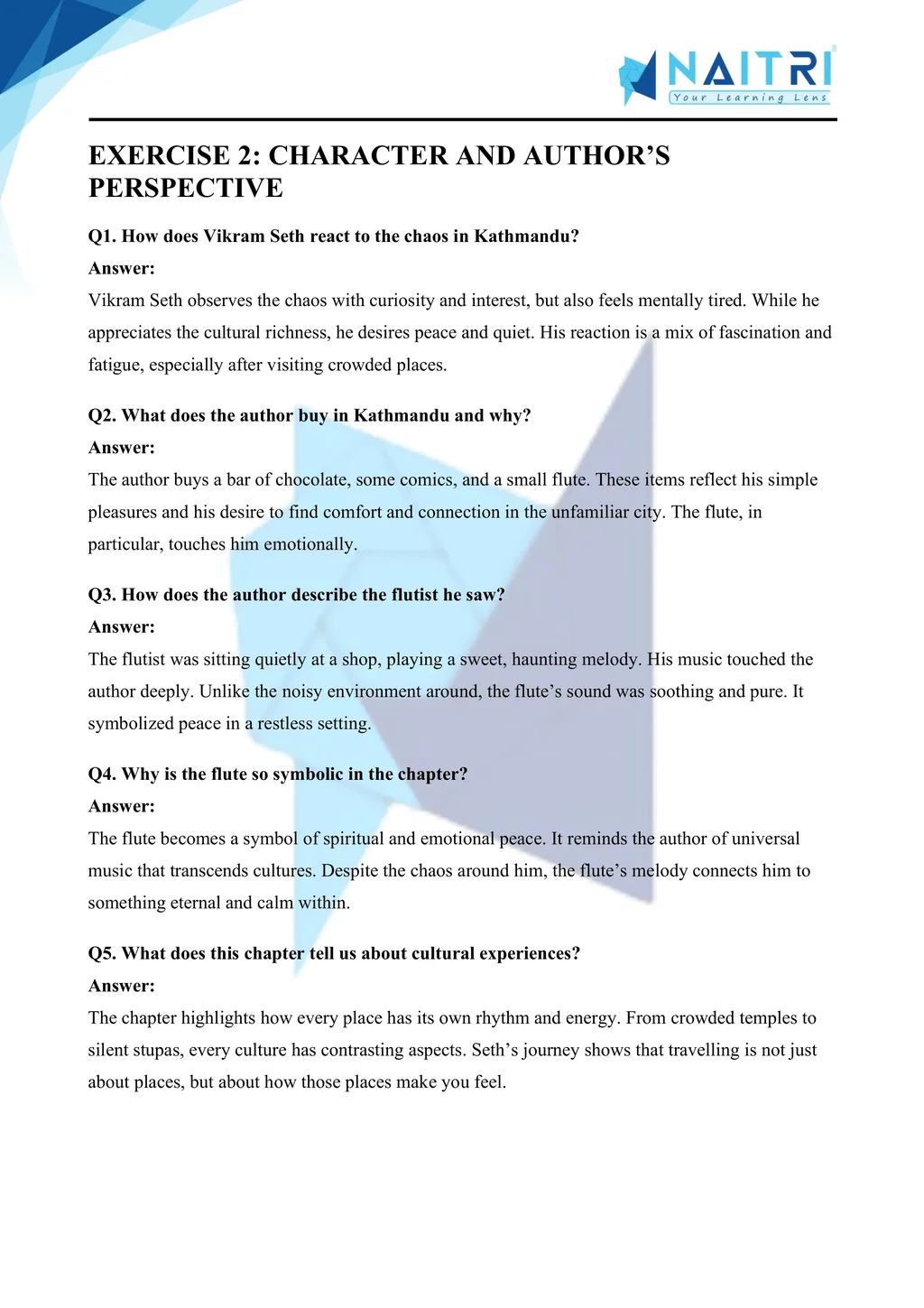
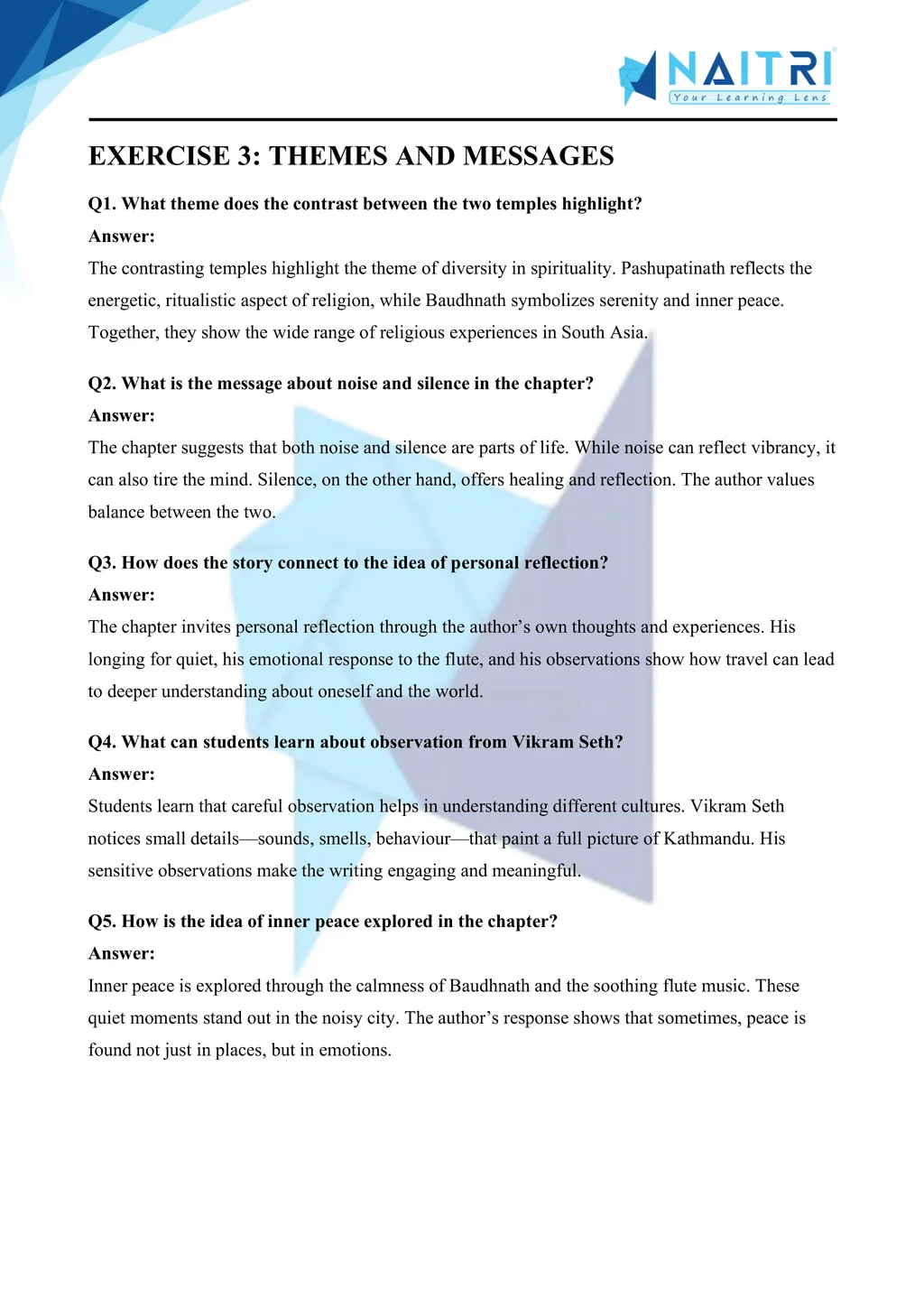
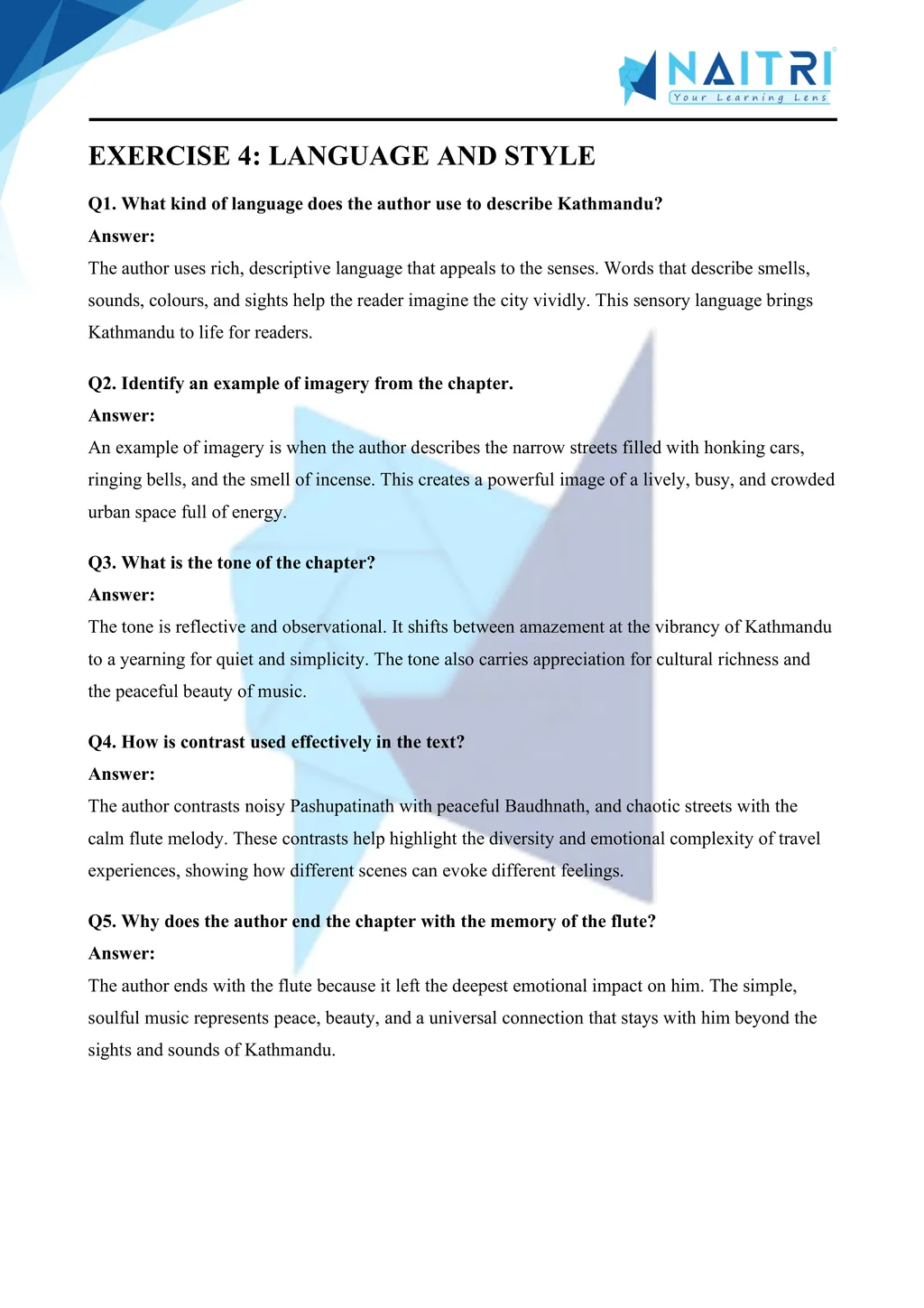
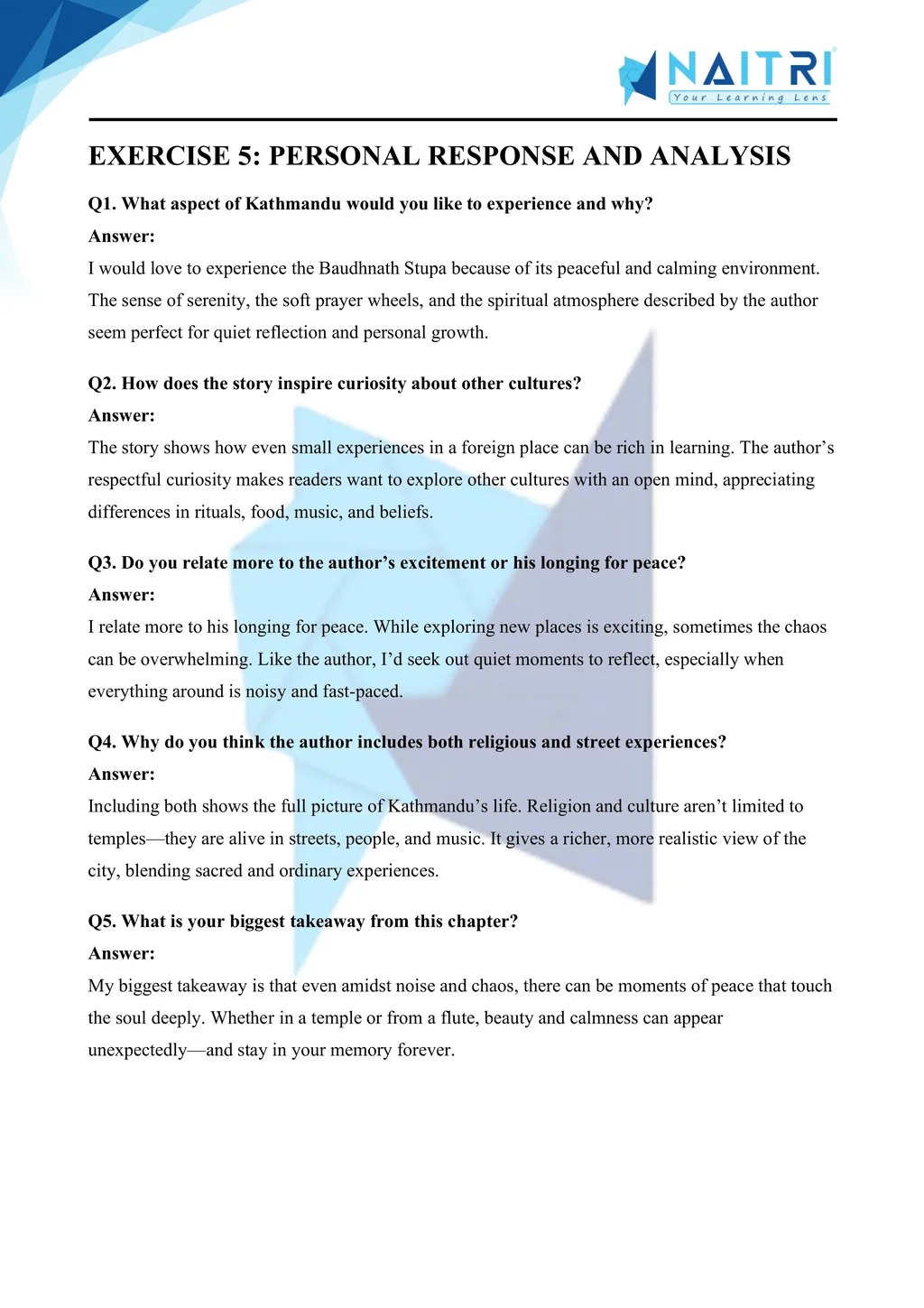
Experience English Like Never Before – With AR!
Understanding Kathmandu is now more exciting and immersive! With the NAITRI App, you can explore engaging literature through Augmented Reality (AR). Stroll through temple streets, hear bustling markets, and discover spiritual contrasts — right in front of you. Our AR-powered lessons make learning interactive, 3D, and fun, helping you retain concepts better and enjoy every topic.



Visualize . Interact . Understand . The future of learning is here
Kathmandu – Important Questions with Answers
Who is the author of the chapter “Kathmandu”?
Answer: The chapter is written by Vikram Seth, who shares his travel experience in Kathmandu, the capital of Nepal, in a personal and vivid manner.What is the chapter “Kathmandu” about?
Answer: It is a travelogue that describes the culture, people, places, and sounds of Kathmandu, presenting a mix of chaos and spirituality.Which two temples did the author visit in Kathmandu?
Answer: He visited the Pashupatinath Temple (a Hindu shrine) and the Boudhanath Stupa (a Buddhist monument), both sacred and culturally rich.How does the author describe Pashupatinath Temple?
Answer: The temple was crowded, chaotic, and filled with priests, devotees, animals, and rituals. It symbolized the noisy and active side of Hinduism.How does the author describe the Boudhanath Stupa?
Answer: The Boudhanath Stupa appeared peaceful and calm, with a sense of order and silence, in contrast to the loud atmosphere of Pashupatinath.What does the author notice at the entrance of Pashupatinath?
Answer: He observes a sign saying “Only Hindus are allowed”, showing how religion and identity play a significant role at the temple.What kind of chaos did the author witness at Pashupatinath?
Answer: He saw people pushing, arguing, monkeys fighting, and even a priest trying to shoo away foreigners, reflecting a scene of complete disorder.How were the surroundings near the temples?
Answer: The areas around the temples were busy and crowded with shops, beggars, vendors, and loud noises, showing urban confusion and energy.How does the author feel in Kathmandu?
Answer: He feels a mix of fascination and discomfort, drawn to the culture but also overwhelmed by the noise, crowd, and lack of peace.What did the author see on the streets of Kathmandu?
Answer: He saw vendors selling flutes, postcards, chocolates, film rolls, and many other items, making the streets look lively and colorful.What does the author say about the flute seller?
Answer: He describes the flute seller as calm and silent, different from others, standing at a corner with his bamboo flutes, lost in thought.Why is the flute seller special to the author?
Answer: The author sees him as a symbol of peace and universality, as his music connects with people of all cultures and backgrounds.How does the author compare the flutes to humanity?
Answer: He compares the flutes to human beings—each one different, but the same when it comes to their ability to produce music or meaning.How does the chapter reflect the diversity of Kathmandu?
Answer: Kathmandu is shown as a melting pot of religions, cultures, and traditions, filled with contrasts between chaos and calm.How does Vikram Seth describe the sounds of Kathmandu?
Answer: He mentions sounds like temple bells, hawkers, radio music, and chanting priests, creating a rich but noisy audio landscape.What kind of transport does the author use to leave Kathmandu?
Answer: He hires a tonga (a horse cart) to go to the bus stop and then takes a long bus journey back to India.What does the author eat in Kathmandu?
Answer: He enjoys marzipan, corn-on-the-cob, and Coca-Cola, which shows his exploration of both local and foreign tastes.Why is the chapter considered a travelogue?
Answer: It describes a personal travel experience, giving details of sights, sounds, food, people, and places, which is typical of a travelogue.What emotions does the chapter evoke?
Answer: The chapter evokes a sense of curiosity, contrast, wonder, and even peace, especially through the image of the flute seller.How does Vikram Seth bring life to the narration?
Answer: He uses descriptive language, vivid imagery, and real observations to paint a picture of Kathmandu that feels alive and authentic.What contrast is shown between the two temples?
Answer: While Pashupatinath is loud and crowded, the Boudhanath Stupa is quiet and peaceful, reflecting the two sides of spirituality.What role do animals play in the chapter?
Answer: Animals like monkeys, cows, dogs, and pigeons are shown mingling freely with people, highlighting the open and sacred nature of the city.What is the author’s writing style in this chapter?
Answer: His style is simple, descriptive, and rich in sensory details, making the reader feel like they are actually present in Kathmandu.What can readers learn from the chapter?
Answer: Readers learn to appreciate cultural diversity, respect religious practices, and find beauty in small things like flute music and local people.Summarize the main theme of the chapter.
Answer: The chapter explores the chaotic beauty, spiritual diversity, and emotional contrasts of Kathmandu through the eyes of a curious traveler.
Kathmandu is a travelogue where Vikram Seth describes the vibrant streets, religious places, and everyday life in Nepal’s capital. The chapter contrasts the spiritual calm of temples with the chaos of city life, using vivid imagery and personal observations. It encourages students to appreciate cultural diversity and the beauty of travel.
Download Naitri App
Easy, Visual Learning — Right on Your Phone
Learn with Augmented Reality! The Naitri app makes CBSE and MP Board concepts interactive and fun — even in low-resource settings. Watch lessons, complete homework, take tests, and track progress — all in one place. Anytime. Anywhere.
Available on








